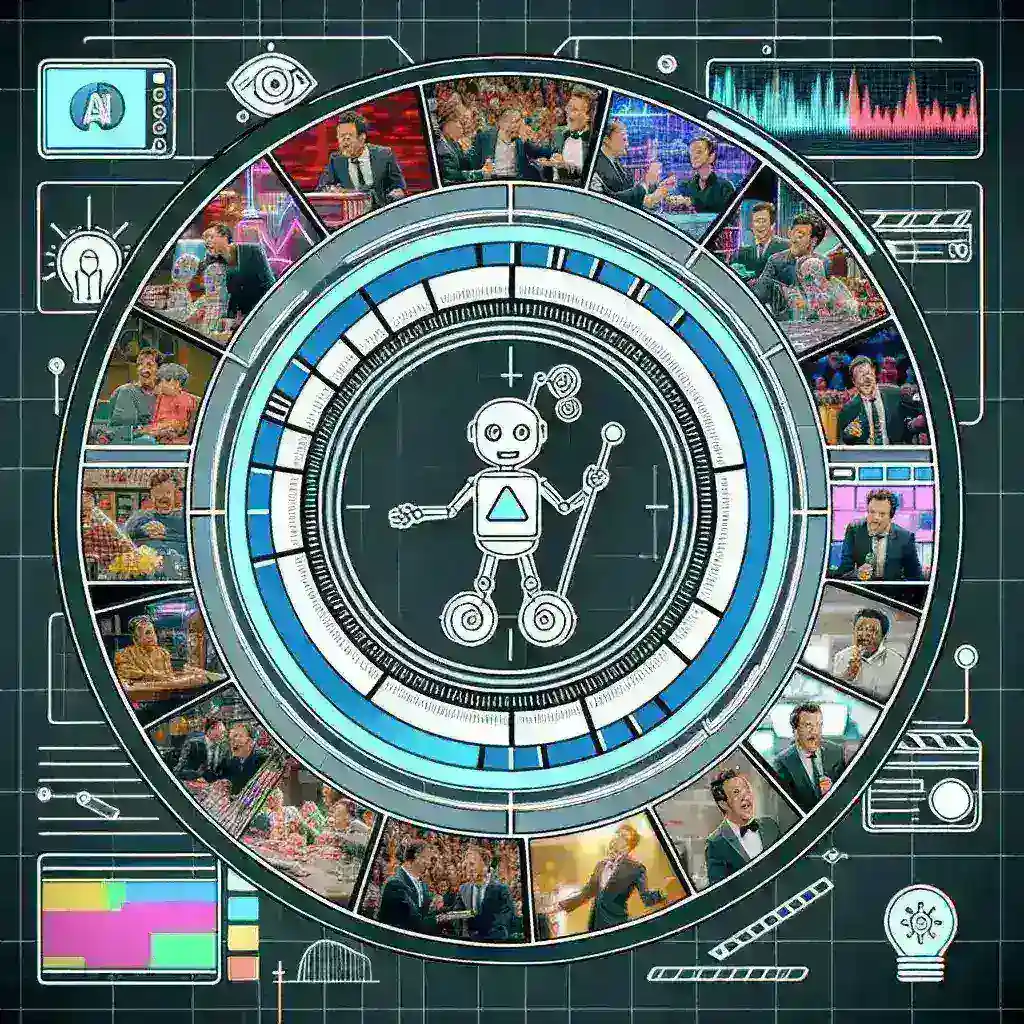Netflix’s Innovative Step into AI-Powered Adaptive Editing
In a groundbreaking move, Netflix is piloting AI-powered adaptive editing for U.S. comedy shows. This innovative approach aims to revolutionize how audiences consume content, allowing for a more personalized viewing experience. By harnessing the power of artificial intelligence, Netflix seeks to enhance storytelling and engagement across its platform.
The Concept of Adaptive Editing
Adaptive editing refers to the use of AI technology to modify and shift content dynamically, tailoring it to the preferences of individual viewers. This technology can analyze viewer behavior, such as what scenes are most engaging or how audiences respond to different types of humor. With this data, Netflix can create a customized viewing experience that resonates more deeply with its subscribers.
Historical Context: The Evolution of Editing in Television
The concept of editing has evolved significantly since the early days of television. Initially, shows were edited for length and content to fit time slots. As technology advanced, so did the approaches to editing, incorporating various storytelling techniques to better engage audiences. The introduction of AI-driven tools marks a significant leap forward, providing opportunities to analyze and adapt content on an unprecedented scale.
How AI-Powered Editing Works
- Data Collection: The first step involves collecting extensive data on viewer preferences. This can include viewing habits, feedback, and engagement metrics.
- AI Analysis: Advanced algorithms analyze the data to identify trends and preferences, determining which elements of a show resonate most with viewers.
- Dynamic Editing: Based on the AI analysis, the editing process adapts in real-time, allowing for seamless transitions and alterations in pace that can enhance comedic timing.
- Viewer Customization: Subscribers may be given options to personalize their viewing experience further, selecting preferred jokes, scenes, or pacing.
Pros and Cons of AI-Driven Editing
Pros
- Enhanced Viewer Engagement: Tailoring content to audience preferences can lead to increased engagement and satisfaction.
- Increased Retention Rates: Personalized viewing experiences may help retain subscribers by making content more enjoyable and relevant.
- Real-Time Adaptation: The ability to alter content dynamically means that shows can evolve based on audience feedback, ensuring they remain fresh and appealing.
Cons
- Loss of Creative Control: Writers and directors may feel that their creative vision is compromised by AI’s alterations.
- Potential Viewer Manipulation: Some critics argue that overly personalized content could lead to a homogenized viewing experience, where diverse storytelling is sidelined.
- Technical Limitations: AI is not infallible; technical glitches or errors in analysis may lead to unsatisfactory editing choices.
Future Predictions for AI in Entertainment
The future of AI in entertainment is bright, with predictions suggesting that adaptive editing will become more mainstream across various genres. As technology continues to advance, we may see a shift towards even more sophisticated algorithms that not only adapt content but also predict viewer preferences before they even express them.
Cultural Relevance of AI in Comedy
Comedy is a complex art form that relies heavily on timing, context, and cultural nuances. AI’s role in editing comedy shows will require a deep understanding of these elements to ensure that humor is not lost in the process. Netflix’s commitment to using AI responsibly will be critical in maintaining the integrity of comedic content while enhancing viewer experiences.
Expert Opinions on AI in Editing
Industry experts have mixed feelings about the introduction of AI editing. Some embrace the potential for personalization, while others caution against losing the essence of storytelling. Renowned director Jane Doe states, “While AI can provide exciting opportunities for engagement, we must ensure that the heart of storytelling remains intact.”
Conversely, tech analyst John Smith remarks, “The future is undoubtedly digital. Embracing AI editing could redefine how stories are told and experienced.”
Real Examples of Adaptive Editing
Several platforms are already exploring adaptive content editing. For example, Amazon Prime Video has tested algorithms that alter pacing based on viewer engagement metrics. Such experiments indicate that the industry is ripe for a shift towards more interactive and personalized content delivery.
Conclusion: Netflix’s Pioneering Role
As Netflix pilots AI-powered adaptive editing for U.S. comedy shows, it stands at the forefront of a potential revolution in the entertainment industry. This initiative not only reflects the platform’s commitment to innovation but also opens up discussions about the future of content consumption. By harnessing AI’s capabilities, Netflix aims to create a more engaging, relevant, and personalized viewing experience, pushing the boundaries of traditional television and setting new standards for creators and audiences alike.

